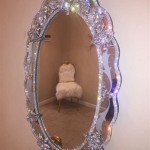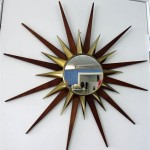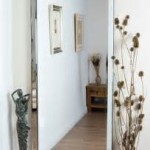Baby Toy Mirrors: Fostering Development Through Reflection
Baby toy mirrors are designed to provide infants with safe and engaging visual stimulation, contributing significantly to their cognitive, emotional, and physical development. These mirrors, unlike standard household mirrors, are constructed with materials prioritizing safety and durability, ensuring they can withstand the exploratory nature of babies without posing a risk of shattering or causing other injuries. The incorporation of mirrors into baby toys represents a thoughtful approach to early childhood development, leveraging a child's natural fascination with faces and reflective surfaces.
The primary function of a baby toy mirror extends beyond mere entertainment. These mirrors play a pivotal role in self-discovery and the development of self-awareness. By observing their own reflection, babies begin to understand the concept of "self" as distinct from the surrounding environment. This understanding lays the foundation for more complex social and emotional skills later in life.
Baby toy mirrors come in various forms, including floor mirrors, crib mirrors, car seat mirrors, and activity gym mirrors. Each type is designed to cater to different developmental stages and contexts. Floor mirrors are ideal for tummy time, encouraging babies to lift their heads and strengthen their neck muscles. Crib mirrors provide visual stimulation during wakeful periods, while car seat mirrors allow parents to monitor their infants during travel. Activity gym mirrors are often integrated into play mats, offering visual engagement alongside tactile and auditory stimulation.
The safety standards for baby toy mirrors are rigorous and often mandated by regulatory bodies. Manufacturers must adhere to strict guidelines regarding materials, construction, and testing to ensure that the mirrors are free from harmful chemicals, sharp edges, and small parts that could pose a choking hazard. The reflective surface is typically made from acrylic or other non-glass materials to prevent shattering. Parents should always verify that any baby toy mirror they purchase meets or exceeds these safety standards.
Beyond safety, the design of baby toy mirrors often incorporates other developmental elements. Many mirrors are surrounded by soft, plush frames with contrasting colors and textures to stimulate a baby's senses. Some mirrors also include interactive features such as crinkling fabrics, rattles, or teethers, further enhancing their sensory appeal and promoting fine motor skill development. These additional features transform the mirror from a simple reflective surface into a multi-sensory learning tool.
Encouraging Self-Recognition and Visual Tracking
The capacity to recognize oneself in a mirror is a significant milestone in a child's development. While the ability to definitively recognize themselves might not emerge until around 18 months, the foundation for this understanding is laid much earlier. A baby toy mirror provides the initial exposure to their own image. Initially, infants may perceive the reflection as another baby, engaging in social behaviors like smiling and cooing. Over time, through repeated exposure and interaction, they begin to associate the image with their own movements and sensations.
Furthermore, baby toy mirrors contribute to the development of visual tracking skills. As babies follow their own movements in the mirror, they strengthen the muscles controlling eye movement and improve their ability to coordinate visual information. This is particularly important during the early months of life when visual acuity and tracking are still developing. The dynamic nature of the reflection encourages active visual engagement, promoting faster and more efficient development of these essential skills.
The use of high-contrast colors and patterns around the mirror can further enhance visual stimulation. Babies are naturally drawn to bold, contrasting colors, which are easier for them to see and process. By incorporating these elements into the design of the mirror, manufacturers can maximize its impact on visual development. The combination of self-reflection and stimulating visual cues creates a powerful learning environment for infants.
Promoting Tummy Time and Motor Skill Development
Tummy time, the practice of placing a baby on their stomach while awake and supervised, is crucial for strengthening neck, shoulder, and back muscles. These muscles are essential for later motor milestones such as sitting, crawling, and walking. However, many babies dislike tummy time initially, as it can be challenging and uncomfortable. A baby toy mirror can serve as a valuable distraction, making tummy time more enjoyable and encouraging babies to stay in that position for longer periods.
By placing a mirror in front of a baby during tummy time, parents can provide a motivating visual focus. The baby will be more inclined to lift their head and look at their reflection, strengthening the necessary muscles in the process. The mirror acts as a visual reward, encouraging them to persist despite the effort required. This makes tummy time less of a chore and more of a playful activity.
The act of reaching for the mirror and attempting to touch their reflection also contributes to fine motor skill development. As babies reach and grasp, they refine their hand-eye coordination and develop the small muscles in their hands and fingers. The tactile experience of touching the mirror or its frame further enhances sensory integration, contributing to overall motor development. The mirror, therefore, becomes an integral part of a baby's physical development journey.
Enhancing Sensory Exploration and Cognitive Growth
Beyond visual and motor development, baby toy mirrors play a significant role in sensory exploration and cognitive growth. The incorporation of various textures, sounds, and interactive elements around the mirror stimulates multiple senses simultaneously. This multi-sensory stimulation is crucial for brain development, as it helps to establish neural connections and enhance cognitive processing abilities.
Mirrors often feature crinkling fabrics, soft plush materials, and textured surfaces that invite tactile exploration. As babies touch and manipulate these elements, they learn about different textures and develop their sense of touch. The inclusion of rattles or squeakers provides auditory stimulation, further enhancing sensory integration. These sensory experiences contribute to a richer and more stimulating learning environment.
From a cognitive perspective, baby toy mirrors encourage problem-solving and exploration. Babies may experiment with different movements and expressions to see how they are reflected in the mirror. They may also attempt to interact with the reflection, reaching out to touch or grab it. These interactions foster curiosity and encourage problem-solving skills. As babies learn to understand the relationship between their actions and the reflected image, they begin to develop a deeper understanding of cause and effect.
Furthermore, baby toy mirrors can be a valuable tool for language development. Parents can use the mirror to engage in interactive play, labeling body parts and describing the baby's actions. This helps to expand the baby's vocabulary and encourages language comprehension. The mirror provides a visual context for language learning, making it more engaging and effective.
In conclusion, baby toy mirrors are a versatile and valuable tool for promoting a wide range of developmental skills in infants. From encouraging self-recognition and visual tracking to promoting tummy time and sensory exploration, these mirrors offer a multitude of benefits. By choosing safe and developmentally appropriate mirrors, parents can provide their babies with a stimulating and enriching learning experience that supports their cognitive, emotional, and physical growth.

Floor Mirror Developmental Baby Tummy Time Toys Activity Double High Contrast Toy Black White Infant For Babies Newborn Infants Toddler Lazada Singapore

Galt Toys Baby Mirror Pupsik Singapore

Mobi Ka Developmental Mirror Target

Tummy Time Floor Mirror Double High Contrast Activity Developmental Black And White Teether Book Toy For Infants Babys Hobbies Toys On Carou

Floor Mirror Developmental Baby Tummy Time Toys Activity Double High Contrast Toy Black White Infant For Babies Newborn Infants Toddler Lazada Singapore

Little Tikes Rock N Spin Mirror Baby Toy Spinning Balls Singapore

3 In 1 Tummy Time Mirror Toys With Soft Crinkle 3d Activity Book Teeth

Sassy Baby Mirror Babies Kids Infant Playtime On Carou

Baby Toys 0 6 Months Tummy Time Mirror With Cloth Books Teethers Montessori Infant For Babies 3 9 High Contrast Newborn Sensory Toy Boys Girls Gift Com

Fisher Turtle Mirror Rattle Toy Pops When Rolled Baby Classic








